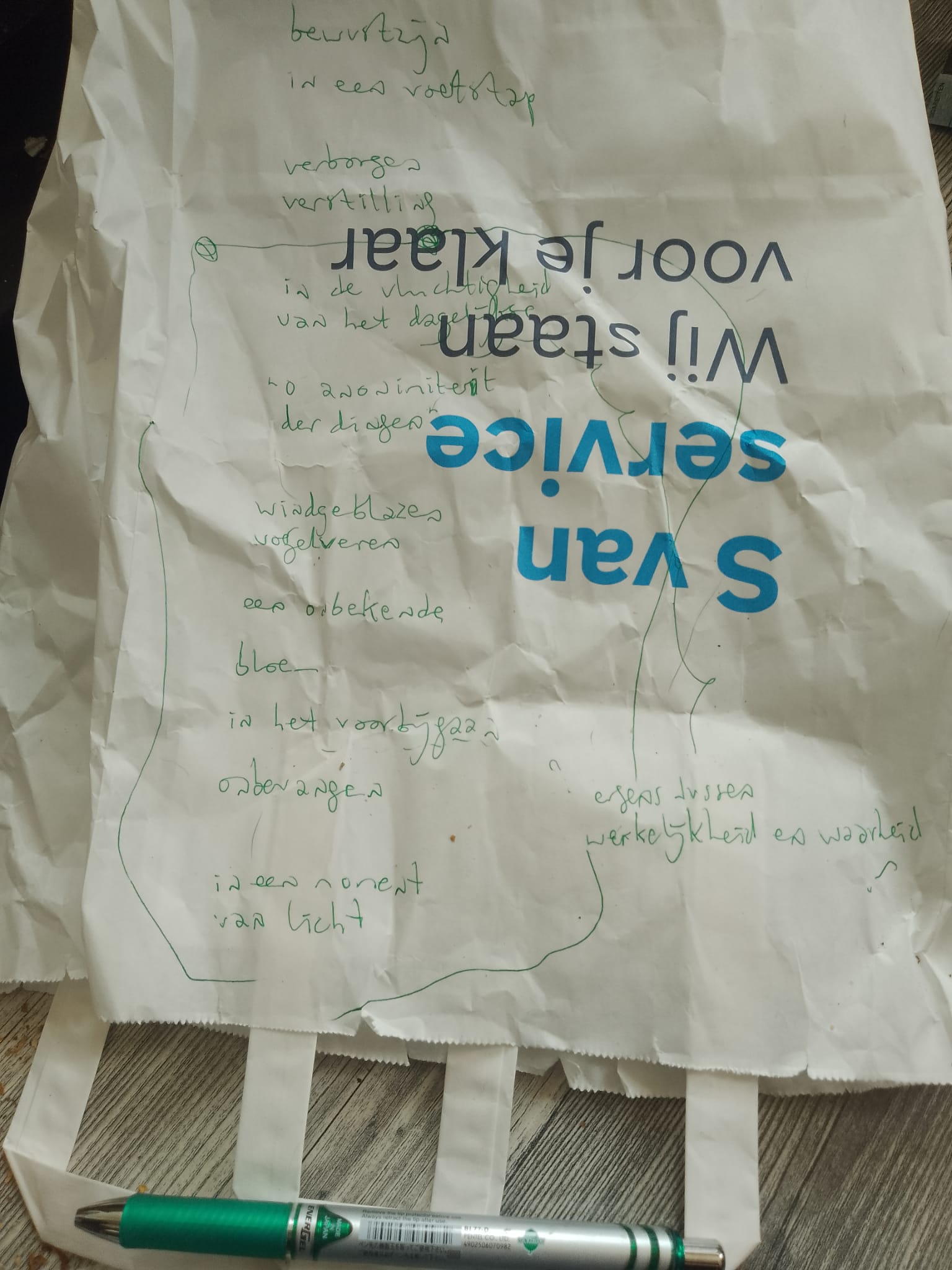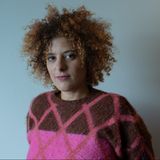Anjez Winkler is a city-teller, a spontaneous anthropologist and an urban storyteller who describes and re-interprets the Amsterdam Nieuw-West area. ‘Zwerfverhalen / Wandering Stories’ is born out of a need to capture everyday coincidences. This process takes a virtuous cycle; Anjez observes as she walks. She has a keen eye on her everyday surroundings while moving through the city. Ephemeral situations draw her in, she captures them by taking a picture with her smartphone; an ideal medium for scouring the Nieuw-West area. There is no post-production, the images we see are the same ones she has seen.
Later she sends her images to the people closest to her, sharing all these mishaps that she found on the streets. The way to look at an object – a leaf or a red cube for example – is not the same for everyone, but in those pictures, there is more. It’s about pure perception, not how we interpret it – which is on another level since it may depend on our culture or experience. Anjez Winkler’s work is accomplished through taking photographs and then interpreting the images with poems, two moments that coexist in a synesthetic experience¹:
TO LOOK IS DIFFERENT FROM SEEING
Ideally, one should approach these images with a solitary, meditative spirit. Perceiving the outside, observing the inside. Reframing our lived experiences through what we encounter on our walks, either through photographs or the words of a poem by Anjez.
TO GO THROUGH IS DIFFERENT FROM WALKING
It is relevant to put one foot after the other with awareness, so that we can nourish ourselves and rework of what surrounds us. We can do this through poetry, photography, or observing the passage of others. Anjez invites us to slow down, not to get stuck in our own visions, but to have the desire to look at the landscape – made up of walls, squares, small objects, which bring us back to the crossing of people.
ILLUMINATING IS DIFFERENT FROM LIGHTING
Light has a direction but we are also giving light a direction. In this sense, the protagonists – in Anjez picture – are movement and change itself. The shifting, internal and external, of visual landscapes and forms of communication.
More about Zwerfverhalen / Wandering Stories
Anjez Winkler is an artist and a poet, before and after her rounds as a postwoman, she walks at mercy of experiencing the world and is completely absorbed in the present moment. She has no fixed destination, she wanders along the road observing every change, every minutiae that catches her attention. She finds a stillness in walking, photographing, thinking, writing, without following a specific path. This allows her to be present in the place where she is and to get rid of possible systemic masks. To do this she constantly changes perspective, searching or finding beauty in small unnoticed things, marveling at the encounter between human ingenuity and the unpredictable movement of objects. Architectural fury, the hyper humanisation of our landscape, the excessive presence of storefronts in which to show oneself – which bring back to the artist the feeling that personalities are fading due to globalisation – don’t attract her; instead, she chooses the street with its accessibility, the objects that are encountered and create speaking images, the instant, the light, the assonances between object and human.
The images displayed in Zwerfverhalen / Wandering Stories, currently at view in New Metropolis Nieuw-West, serve to disorient, to transfer to others what the city communicates to Anjez. Observing those photographs, you learn to experience the city through her eyes, and while you familiarise with her way of looking, you start to recognise the city through her perspective. It is a mixture of languages that speak of different worlds that are present in the same place at the same time and can be perceived synchronously. These pictures represent the chaos of the world, they allow us to remember our presence, the things we are surrounded by. This is done through the contemplation of the details and particulars that form the dynamics of a city. What is perceived is a personal vocation – from the artist side – that arose spontaneously, from someone who searches the world for they own way, matured with the need to bring back the order of things from the outside to the inside and vice versa, in order to find an inner balance. In fact, this photographic project – in constant motion – exhorts one to lose oneself in order to find oneself, to wander in order to focus on the present moment, to observe details in order to recognise one’s imperfections, remember our presence in the world, a journey both external and introspective.
Anjez has the ability to infuse poetry, not only through words, but through her photographs, as she helps us explain the contemporary time. Through curious-looking pieces of paper, parts of some machine, a broken umbrella, horizontal compositions and the way we litter. In her unending journey, she can only invite us to wander around ourselves.
A poem by Anjez Winkler

consciousness
in a footstep
hidden
stillness
somewhere between
reality and truth
in the fleeting everydayness
“o anonimity
of all
things”
windblown
bird feathers
some unnamed
flower
while passing by
unpretending
in a moment
of light
1 The rhetorical figure of synesthesia occurs when words belonging to different sensory spheres are associated. The etymology of the term synesthesia comes from the Greek Syn, ’together,’ and Aisthànestai, ’to perceive,’ and collectively means ’to perceive together, to feel together.’ In fact, the word synesthesia is used precisely to indicate an experience of simultaneous perception.










